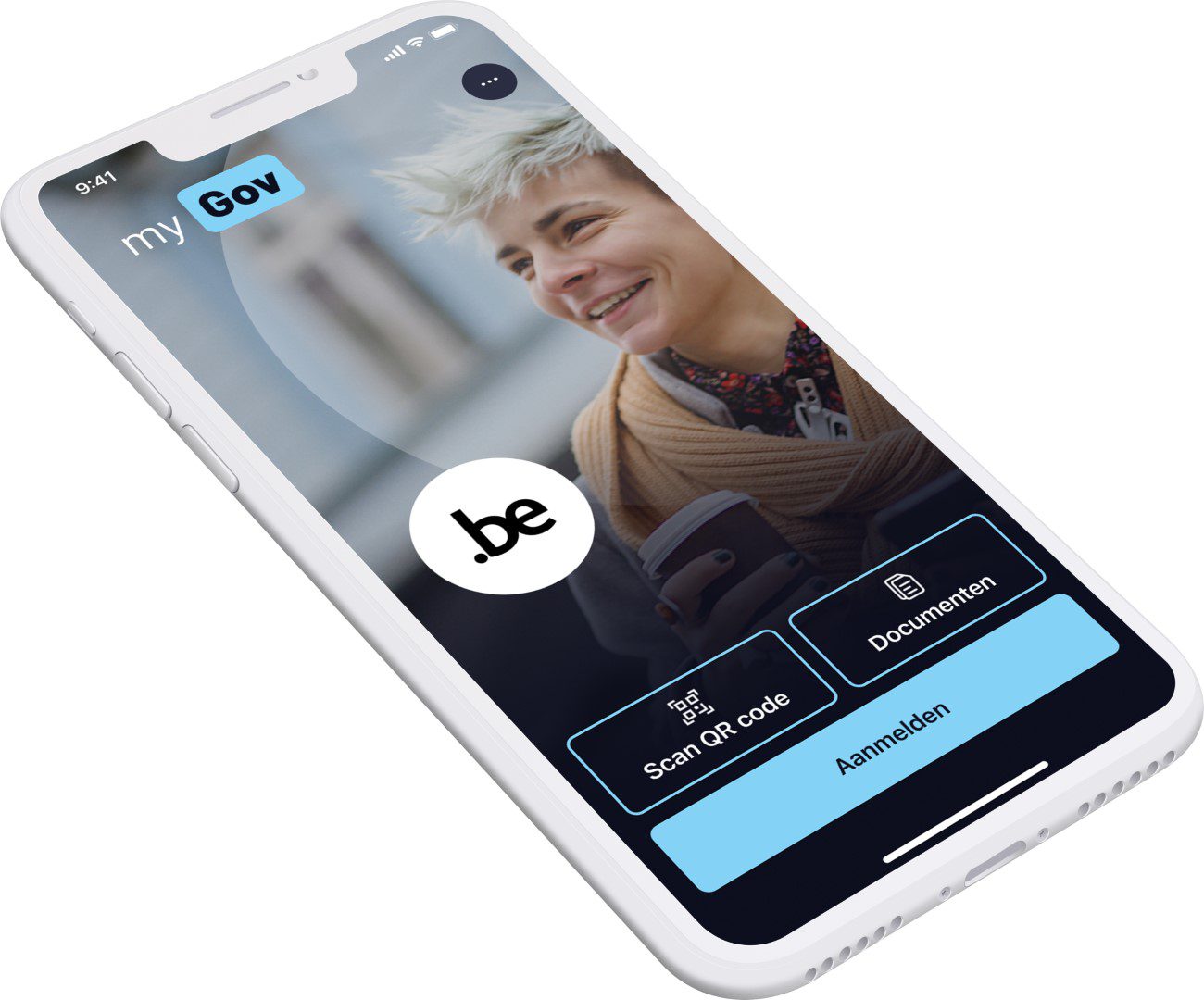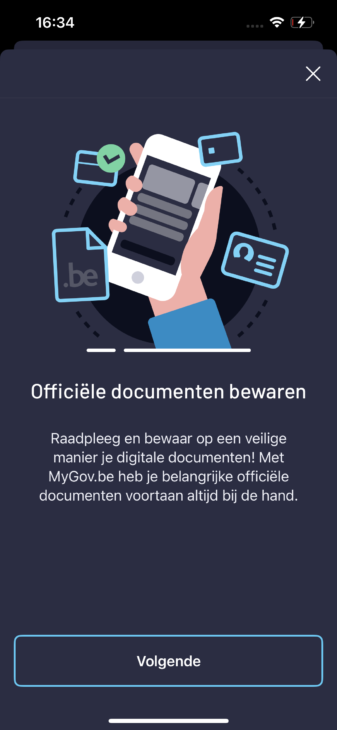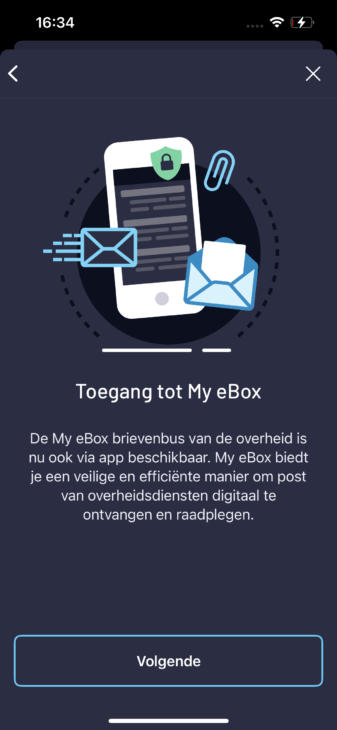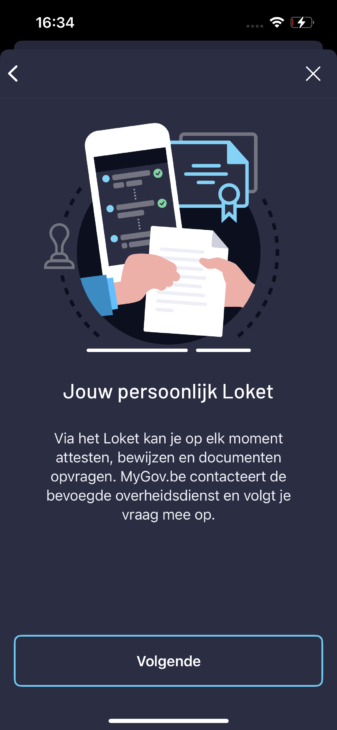MyGov.be: your digital identity in your pocket
- July 9, 2024
- 0
The Belgian government’s MyGov.be app has been available since May. The app is designed to act as a digital identity wallet on your smartphone. How do you use
The Belgian government’s MyGov.be app has been available since May. The app is designed to act as a digital identity wallet on your smartphone. How do you use


The Belgian government’s MyGov.be app has been available since May. The app is designed to act as a digital identity wallet on your smartphone. How do you use the app and why do you need a digital identity?
On May 14, FPS BOSA, the Federal Service for Policy and Support, announced the launch of MyGov.be, a new mobile application released by the Belgian federal government. MyGov.be is intended as a “digital identity wallet” where you can eventually store important documents and certificates such as your identity card and driving license.
With the application, the federal government wants to simplify its services for citizens, explained the outgoing Secretary of State for Digitalization Mathieu Michel (MR) at the presentation. “The Belgian institutional model is complex. With MyGov.be, citizens who want them can finally have government services available anywhere and at any time. Simple, scalable and secure: this app is a new, smoother and more intuitive means of communication between citizens and authorities.”
The MyGov.be app didn’t just come into being. The European Union rolled out the red carpet at the end of April with the adoption of the eIDAS 2.0 legislation. eIDAS is the regulatory framework for electronic identification and authentication technology and “trust services” in Europe.

The first eIDAS regulation was adopted in 2014 and entered into force in 2016. Its aim was to create common rules for electronic identification and signature between all European member states in order to avoid regulatory confusion. However, as technological development in this area has not stopped since 2014, the need for updated, more contemporary legislation arose.
And so eIDAS2 came into force on April 30th. The revision extends the scope of the original regulation to additional areas of application and is primarily intended to ensure greater uniformity across national borders. eIDAS also sets stricter standards for security and data protection. The law has officially been in force since May 20th: Member states now have two years to comply with it.
With eIDAS2, the European Union has also laid the legal foundations for this Digital identity wallet. Your digital wallet allows you to keep important identification documents such as your passport and driver’s license safe on your smartphone. The paper versions won’t suddenly disappear, but having a Digital Identity Wallet in your pocket will make it less of a problem if you forget your wallet.
The idea of the digital identity wallet arises from the fact that the smartphone has become an indispensable object in our daily lives. We also use it more and more for our administration. Since the Corona pandemic, private and public organizations have accelerated their digital services, but there are still many bureaucratic processes that cause headaches for citizens.
Two-thirds of European citizens demand a digital identity and have the greatest trust in the government as the main provider.
eIDAS2 aims to put an end to this once and for all by ensuring that citizens everywhere can digitally identify themselves in more or less the same way, regardless of which EU country they reside in. The government will now be able to serve citizens 24/7, even outside office hours. eIDAS obliges EU member states to offer the digital wallet and they are given 24 months to make this happen.
“Society is evolving. Citizens are travelling more and are used to having travel documents on their smartphones,” says Jack Hamande, Director General Digital Transformation at FPS BOSA. “The Digital Identity Wallet was born out of Europe’s desire to make public institutions’ services available across national borders. We in the government welcome this opportunity.”
The use of the digital wallet is optional for citizens. The EU hopes that by 2030, eighty percent of citizens will use it. A survey by Thales shows that two-thirds of European citizens (58 percent in Belgium) want a digital identity. 60 percent have more trust in the state as the main provider than in private companies.
The Belgian implementation of eIDAS2 and the Digital Identity Wallet is MyGov.be. The federal government did its homework quickly: the application was launched before the eIDAS2 regulation actually came into force. MyGov.be can be downloaded for free from Google Play or the Apple App Store.
After installing the application, you must select your preferred language. The application is available in the three official national languages: Dutch, French and German, but also in English. You register with itsme or an eID and card reader, scan your ID card and then set a PIN code. You will then see the app’s four main menus: Documents, My eBox, Scanner, Loket. You can use the switch to request documents and certificates, such as your birth or marriage certificate.



The first version of the app is rather limited. For example, you can now add Covid vaccination certificates, which could potentially include all vaccinations received. Digital copies of your ID card and driving license will not have legal validity until next year at the earliest, when the regulations regarding this will change.
Hamande: “The current application is a taste of the possibilities of a digital wallet. You have to look at MyGov.be as an ecosystem. At a macro-European level, there are many possibilities, but adding more functionalities sometimes requires complex integrations with other services. What ends up in the portfolio depends in part on what citizens and public institutions think is necessary. We are also open to feedback from the business world on what they want from the application.”
With new releases, the government wants to add additional functionalities step by step. A first major update is planned for autumn. FPS BOSA shares the following schedule:
| 2024 | 2025 | 2026 | |
| Identification documents | Digital eID Digital driving license |
||
| Documents | Family Health Civil certificates My benefits |
Finance – Pension – Student Health (other certified vaccination – vaccination) |
other documents Digital travel data European Health Insurance Card European Disability Card |
| Features | Authentication | Digital signature Share documents and attributes Cross-border exchange |
Data exchange |
Thales surveyed citizens in seven EU countries (Belgium, the Netherlands, Germany, France, Italy, Sweden and the Czech Republic) about what they want from a European digital wallet. One wish was unanimous: security. Losing your ID card or driving license is a disaster and citizens don’t want to lose their digital identity if they lose their smartphone. A central platform where you can store all your documents must also offer more security than photos or scans that you store on your device.
European legislation prescribes security standards, but leaves implementation in practice to the member states. “The security of the app is ensured by a combination of different measures. These measures are continuously evaluated and adapted,” says Christine Mathieu, Program Manager Digital Identity Wallet at BOSA.
The Belgian MyGov.be app uses eID or itsme to secure your wallet and requires the creation of a six-digit PIN to log in. The choice of itsme is not illogical: the app is already used by seven million Belgians and has been officially recognized by the government for several years.
This does not necessarily rule out alternatives, although there are currently no parties eligible for recognition. “The government is committed to creating an open environment,” Hamande stresses. “It is good that several players are entering the market, but they must adhere to European standards. Security is in the design of the platform. The Digital Identity Wallet certification process at the European level is still in full development and is not expected to be completed until 2025.”
Closely linked to security, data protection is high on the wish list of European citizens. The focus on data protection is gradually becoming deeply embedded in Europeans’ attitudes towards technology, thanks in part to the EU’s strict data processing legislation. The eIDAS regulation advocates the “control what you share” principle, where the user decides what they want to share and what they don’t.
The MyGov.be app is far from the first application launched by a government service in Belgium. In recent years, eBox, MyPension and MyMinfin, among others, have seen the light of day, in addition to initiatives by the Flemish (MijnCitizenProfiel) and Brussels governments (Irisbox) and private administration apps such as Doccle. Also, don’t confuse MyGov with GovApp, the government’s digital communication app, which will also eventually be merged into MyGov.be, adds Mathieu.
All these initiatives have the common goal of banishing paper documents from our lives. But don’t all the different applications with similar functionalities make things even more confusing? Professor Ilse Mariën from the VUB criticized the “tangle of information flows” at VRTNWS.
“We made our vision clear during the press conference before the launch: With MyGov.be we want to grow towards fewer applications,” Hamande replies sharply. “Services that are integrated into MyGov no longer need their own application.”
“At the same time, we want to prevent the development of new applications. We are working hard on interoperability and integration of federal government services wherever possible. We may not be able to put everything in one app, but the goal of MyGov.be is convergence,” Hamande continues his argument. Belgium will remain Belgium, so don’t expect MyGov.be to be the only government app on your phone any time soon.
With MyGov.be we want to grow towards fewer applications.
Jack Hamande, FPS Bosa
Source: IT Daily
As an experienced journalist and author, Mary has been reporting on the latest news and trends for over 5 years. With a passion for uncovering the stories behind the headlines, Mary has earned a reputation as a trusted voice in the world of journalism. Her writing style is insightful, engaging and thought-provoking, as she takes a deep dive into the most pressing issues of our time.